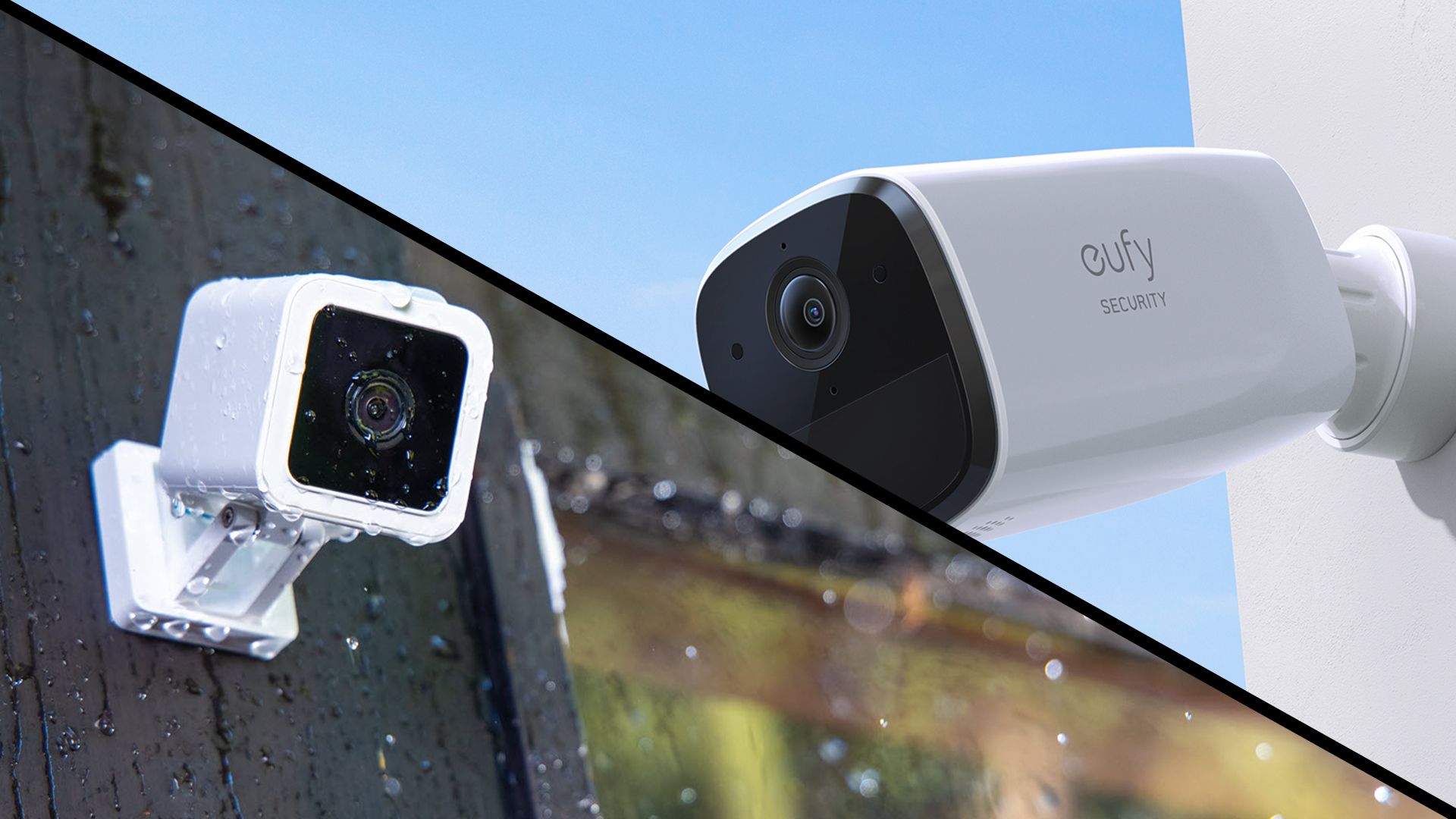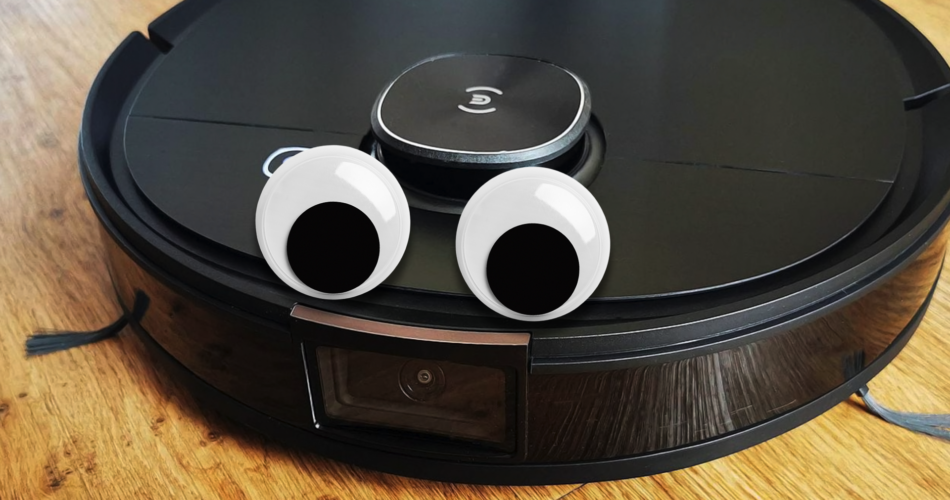Avoid robot vacuums with cameras.

Camera-equipped robot vacuums can roam around your home, presenting unique opportunities for hackers to violate your privacy. There are ways to mitigate this problem, but a robovac without a camera is your best option.
The internet presents a unique opportunity for creeps, hackers, and corporations who want to invade your privacy. By now, you’re probably aware of all the hand-wringing that surrounds this topic. But there’s one privacy threat that’s managed to slip under everybody’s nose—the cameras in our robot vacuums.
Roaming Cameras Are a Privacy Nightmare
We believe that indoor security cameras are a threat to user privacy. If a hacker manages to access an indoor security camera feed, they can spy on your family and hear your conversations. They might even catch you with your pants down, depending on where you place the camera in your home.
So, what happens when you place an indoor security camera on wheels? Well, you get a modern robot vacuum. Advanced room-mapping and obstacle avoidance features require some level of “computer vision,” which is usually achieved through a combination of IR sensors, LIDAR, and good-old-fashioned digital cameras.
Robotic vacuums with built-in cameras take pictures of your home. And some robot vacuums, like the Ecovacs Deebot Ozmo T8 AIVI, can be controlled with a live video feed from your phone. This data is encrypted, but it’s valuable to hackers and creeps, who are known to skirt security measures in smart devices.
Obviously, the main concern here is that robot vacuums can travel to any part of your home. If a hacker gets a closeup view of your sneakers, it’s not a big deal. But what happens when a robot vacuum follows you into the bathroom? And if you have children, could their privacy be compromised by a robot vacuum?
The Ongoing History of Smart Camera Hacks

If we’ve learned anything in the last decade, it’s that tech companies have very little respect for the privacy of their customers. And this is especially true for smart home companies, which are regularly caught up in scandals due to their neglectful security practices.
You don’t need to look hard to find examples of this tomfoolery. Late last year, eufy was caught lying about the “local-only” nature of its security cameras. It also denied the fact that, with a bit of know-how, hackers could remotely access eufy camera feeds from their desktop computer.
Oh, and remember what happened to Wyze? Security researchers at BitDefender warned Wyze about a critical camera vulnerability in 2019. Three years later, BitDefender had to take the vulnerability public, as Wyze had simply decided to ignore the problem.
Admittedly, hackers haven’t shown much interest in robot vacuums. But we expect this to change as camera-equipped vacuums become more affordable. And, thanks to iRobot, we have a general idea of what to expect from such a hack.
Back in 2019, iRobot reached out to find beta testers for its preproduction Roomba J-series vacuums. These robotic vacuums included a camera for room mapping, object identification, and obstacle avoidance. Unfortunately, during the beta testing period, images shot by these vacuums were sent outside of the United States and annotated by contract workers.
About 15 images shot by these robot vacuums leaked to Facebook, including photos of a woman on the toilet. The MIT Technology Review published a detailed report on this scandal, and I promise that it will strike fear into your heart. (To reiterate, this scandal is related to a beta testing program. Testers signed contracts and were paid to participate in this program. Your Roomba isn’t sending photos overseas.)
ILIFE V3s Pro Robot Vacuum Cleaner
The ILIFE V3s Pro is a bare-bones robotic vacuum without any cameras, LIDAR sensors, or internet connectivity. Still, it’s fairly affordable and does a good job cleaning pet hair from carpet or hard floors.
Should You Be Modest Around Your Robot Vacuum?

Your robot vacuum might threaten your privacy. But the good news is that you have a decent amount of control over the situation. By restricting your robot vacuum’s movements and changing your habits, you can (hopefully) prevent hackers from seeing anything but the floor and furniture in your home.
If you own a camera-equipped robot vacuum, schedule it to clean at times when you aren’t home. Program no-go zones to keep it out of bedrooms and bathrooms, and don’t strip down in front of the dang thing. (Your vacuum may give you the option to disable the camera. This is not a guaranteed solution to the problem, as the camera could be re-enabled by hackers.)
Now, I don’t think that this is an ideal way to exist. You’re an adult, and you should have the freedom to cook in your underwear, sit on the toilet with the door open, or perform any other act of hedonism in your home without the fear that some pencil-necked hacker is watching you.
Abstinence is the only way to avoid getting screwed. If you don’t want a camera roaming around your home, buy a robot vacuum that doesn’t have a built-in camera!
Consider Buying a Robot Vacuum Without a Camera

If you want peace of mind and privacy, keep internet-connected cameras out of your home. Manufacturers will swear that their products are secured like Fort Knox, but as we’ve learned, smart home companies rarely prioritize security or respect their customers’ privacy.
So, consider buying a robot vacuum that doesn’t have a built-in camera. There are plenty of options to choose from, including the base model Roborock S7, the ILIFE V3s Pro, and the iRobot Roomba i3+ EVO.
Note that robot vacuums with cameras offer increased room mapping and obstacle avoidance features. A robot vacuum without a camera won’t feel very “smart,” especially if it lacks LIDAR sensors. For that reason, I suggest checking out the Roborock S7 before looking into any other cameraless robot vacuums.
Roborock S7 Robot Vacuum and Mop
The Roborock S7 doubles as an ultrasonic mop and automatically dumps waste into its charging dock. It also uses a LIDAR sensor for navigation, making it a great alternative to camera-equipped robot vacuums.
Source link





